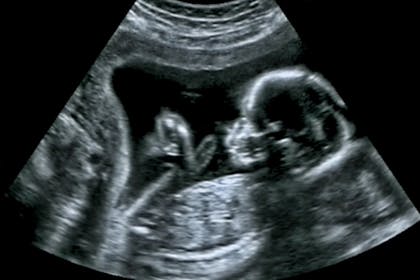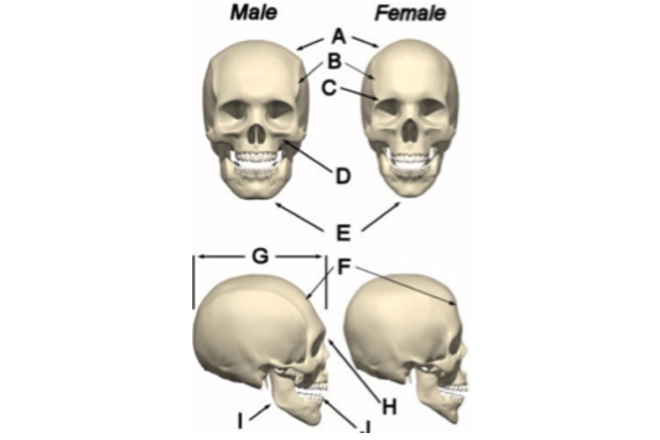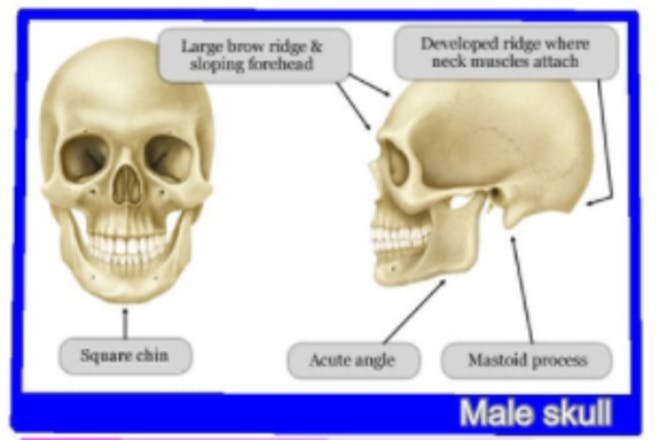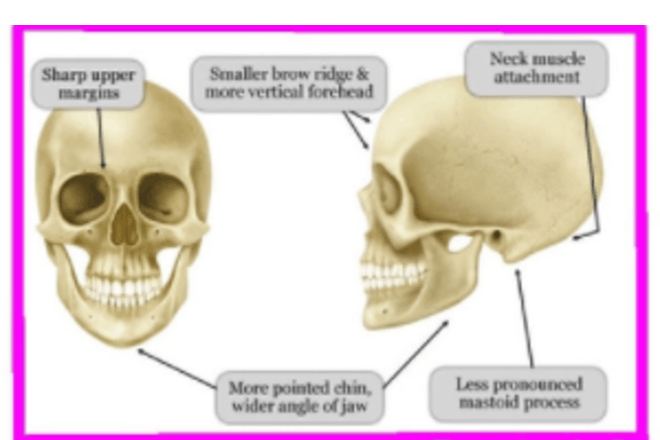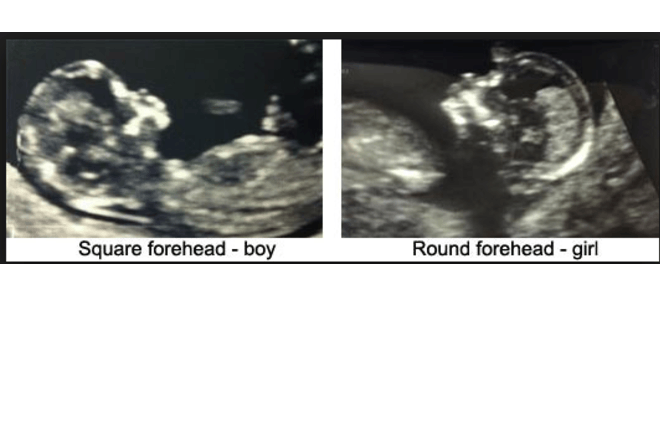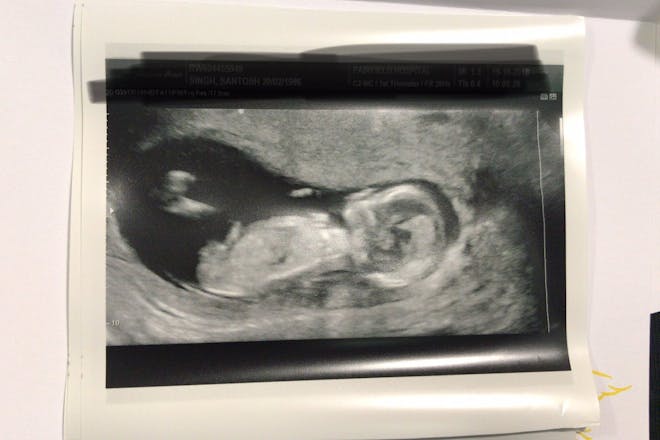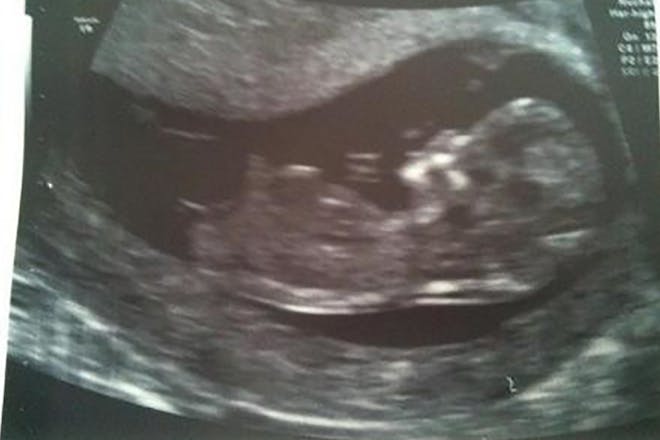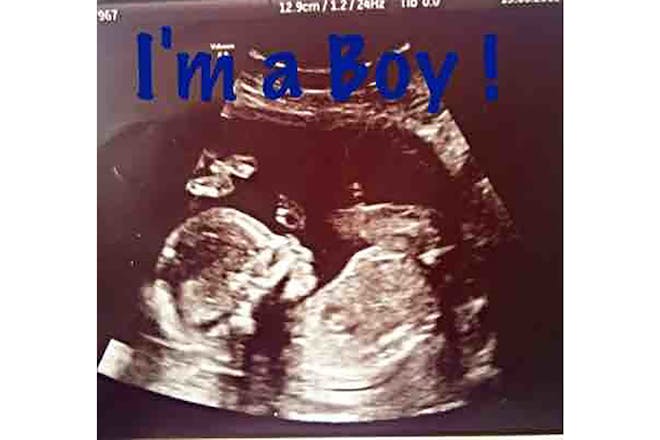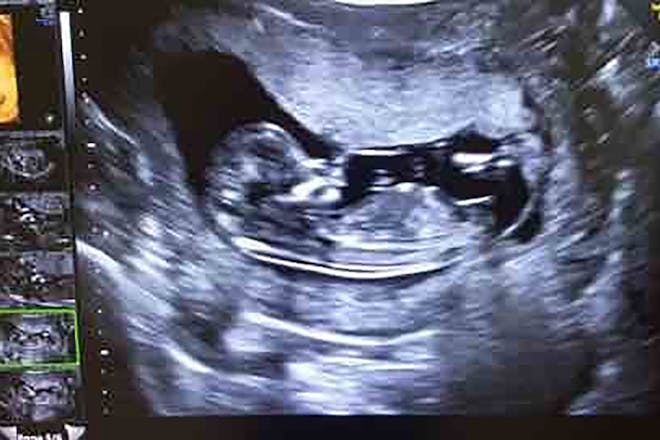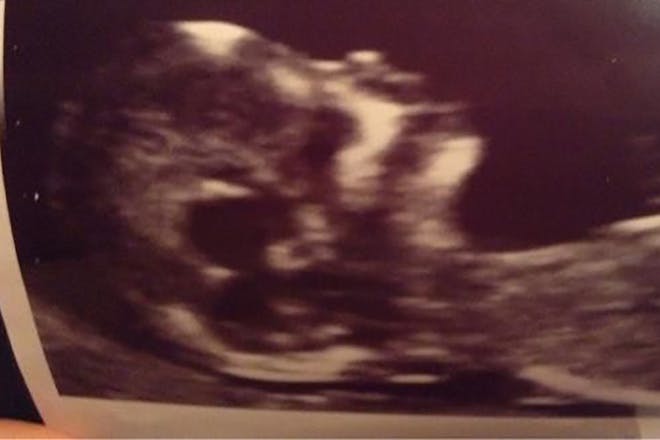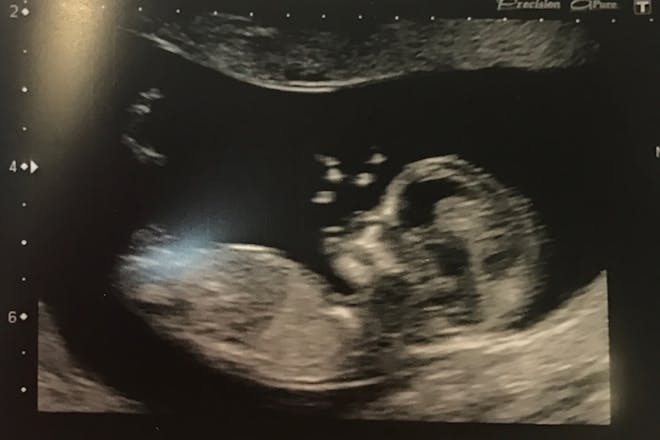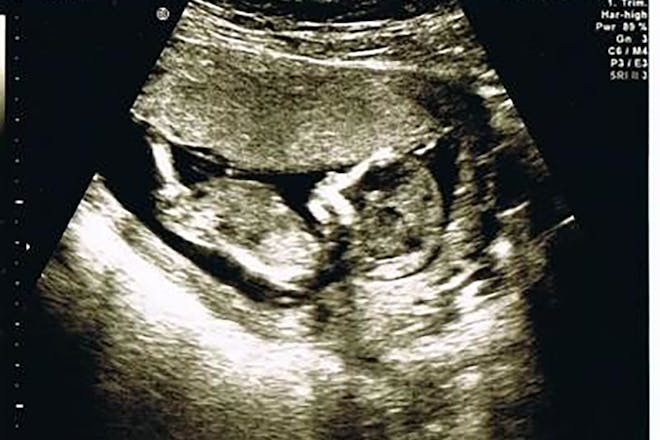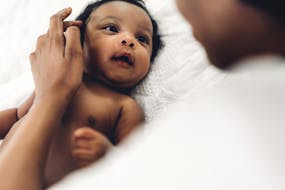If you're dying to know your baby’s sex then you may like to try skull theory – a test that claims to tell if you're having a boy or girl from your 12-week scan
The most reliable way to find out whether you're having a boy or a girl is to wait for your 20-week scan . Although your anomaly scan is mainly meant to check your baby's physical health, the NHS says that you can ask the sonographer to predict their sex as well.
But if you're desperate to know your baby's sex sooner, you might find skull theory useful. This alleged sex-prediction test claims to work out the physical gender of your baby at 12 weeks, all just from a routine ultrasound photo.
We look into how it works, what it's based on and whether there's any science to back it up – or if it's simply an old wives' tale.
FREE NEWBORN NAPPIES
What is skull theory?
Skull theory claims that you can work out if you're having a boy or a girl just by looking at the shape and size of the skull in your baby's first (12 week) scan picture. There's no scientific evidence that it works, but there's certainly no harm trying it out.
The theory goes that there are certain clues in the size and shape of a baby's skull that reveal if it's a boy or a girl, although experts say that these changes don't actually occur until puberty.
There are three key things you'll need in order to try skull theory out for yourself:
- your baby's first scan photo ie your 12-week ultrasound picture
- a magnifying glass
- knowledge on the difference between a male and female skull (more on this below!)
Skull theory: it's a boy!
Here's what the skull-theory believers say are the clues to look for that will reveal you're having a boy (the letters A–J relate to the image below on the LEFT-HAND SIDE, so you can see where each part is on the skull):
- The male cranial mass (A) is more blocky and big compared to the female's, which is rounder and tapers at the top.
- The temporal ridge (B), which runs along the outer side of the upper skull creating the square shape of the upper head is more prominent in males than females.
- A male's supraorbital margin (C) – the ridge above the eyes – is round and dull.
- The zygomatic bone (D) – the cheekbone that lies under the lower eye ridge – is more pronounced on the male skull.
- The mandible or lower jaw bone (E) of a male is squared, unlike a female's, which is rounded.
- The male forehead (F) is lower and more sloping.
- Men have a deeper cranial mass (G).
- The superciliary arch (H) is large and pronounced in males.
- The male's gonion (I) – the most lower rear point on angle of the lower jaw bone – is more flared out and sharply angled.
- The teeth (J) of males tend to be larger.
Skull theory: it's a girl!
Here's what skull theory believers say are the clues to look for that will reveal you're having a girl (the letters A–J refer to the image above on the RIGHT-HAND SIDE so you can see where each part is on the skull):
- The temporal ridge (A), which runs along the outer side of the upper skull creating the square shape of the upper head is less prominent in females than males.
- The female cranial mass (B) is rounder and tapers at the top.
- A female’s supraorbital margin (C) – the ridge above the eyes – is sharper and less rounded than a male's..
- The zygomatic bone (D) – the cheekbone that lies under the lower eye ridge – is less pronounced on the female skull.
- The lower jaw bone (E) of a female is more rounded, while the male’s is squared.
- The female's forehead (F) tends to be higher and less sloping.
- Females don't have such a deep cranial mass (G).
- The superciliary arch (H) is smaller and less pronounced in the female.
- The female's gonion (I) – the most lower rear point on angle of the lower jaw bone – is less flared out and less sharply angled.
- A female's teeth (J) tend to be smaller.
Skull theory: real-life tips
Lots of mums in the Netmums forum have told us the best way they've used skull theory to detect if it's a boy or a girl. Here's what they've said about working out the sex of a baby from an early scan picture:
- 'The boy's forehead slopes whereas a girl's is more vertical'.
- 'Girls have more vertical foreheads and boys are more rounded'.
- 'Boys do tend to have bigger heads'
- 'If there's a rounded crown, I'd say it's a girl.'
Skull theory boy and girl examples
These ultrasound pictures help illustrate skull theory. Look at the subtle differences that reveal if the baby's a boy or a girl:
And here are some examples from the Netmums forum, where users have posted pics of their 12-week scans, and come back later to let us know if it was a boy or a girl:
Skull theory: boy or girl?
See if you can guess if these scan pictures show whether it's a boy or a girl, by joining in the chat in the Netmums forum .
Skull theory: is it accurate?
Although you'll find mums who swear by skull theory to predict the sex of their baby, there's no scientific proof or evidence backing it up .
Dr Kristina Killgrove , a biological anthropologist at the University of West Florida , is often quoted on skull theory.
She believes that, although differences in the male and female skull exist, skull shapes can vary between different races too.
As the human skull isn't fully formed in the womb (and continues growing), Kristina says there's little truth to the theory.
'Until you get to maturity or at least puberty you just don't get these sexually dimorphic features of the skulls in males and females,' says Dr Killgrove.
Consultant obstetrician and gynaecologist Dr Shazia Malik agrees. She told The Sun that there is:
'no meaningful scientific evidence of it being meaningfully accurate'.
So, as accurate as some may find it, skull theory is nothing more than a bit of fun , similar to one of the many old wives' tales that just keeps on popping up on the subject of whether it's a boy or a girl.
Of course, provided you know that – and won't be too disappointed if it's wrong – there's no harm in giving it a go.
Netmums users have also shared how accurate skull theory was for guessing their babies' sex in the forum. Here are how some of their guesses lined up with the anomaly scan:
- 'Lots of people guessed girl for my 13 week scan pic as the head was so rounded. Well I'm having a little boy due in 6 weeks.'
- 'I think the skull theory only works from a 20 week scan as that's when the boy starts equaling out a little more until then the heads are miles bigger than the body'
- 'My girls' skulls were really round in their scan pictures.'
- 'my sister's scan look just like that and I tried to use skull theory thinking it was a girl but turns out she's having a boy'
Let us know in the Netmums forum if it turns out to predict the sex of your baby correctly!
Skull theory V nub theory: what's the difference?
Skull theory and nub theory seem to be the most popular ways to predict if you're having a boy or a girl. Although they both require a first scan photo to look for clues as to the sex of your baby, that's where the similarities end.
Skull theory revolves around the skull (as above) but nub theory looks at a little 'nub' that both boys and girls have in the early weeks of development in the womb. Some experts think they can use subtle differences in the shape of this nub to tell the baby's sex.
Read more about nub theory here.
How else can I predict if it's a boy or a girl?
The only accurate way to predict if you're having a boy or a girl is to ask your sonographer at your 20-week anomaly scan – and even that isn't 100% guaranteed!
But for more fun and sometimes-spookily-right old wives' tales, click below to have some fun trying to guess if it's a boy or a girl. Good luck!
Related stories
The Chinese chart that predicts your baby's sex
CHAT: Boy or girl. 20 week scan. Skull theory
Holly Willoughby explains her own unique sex-prediction test
